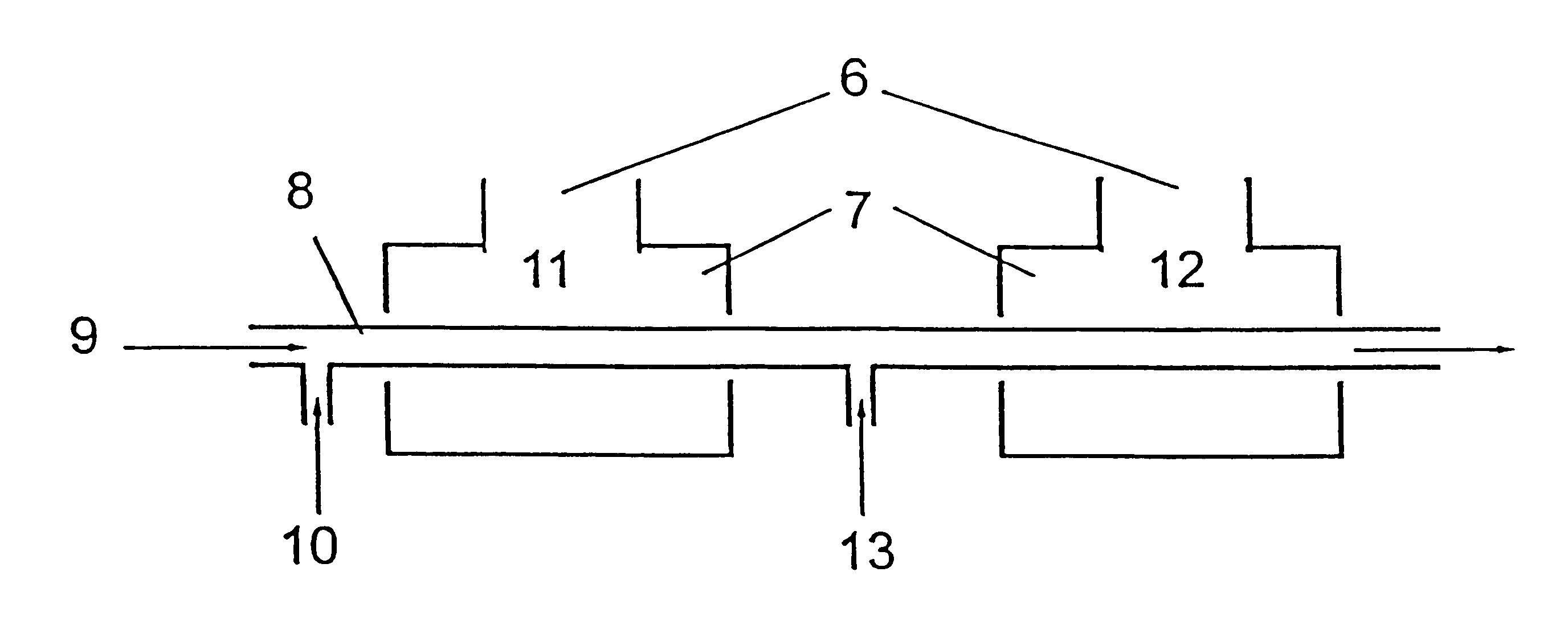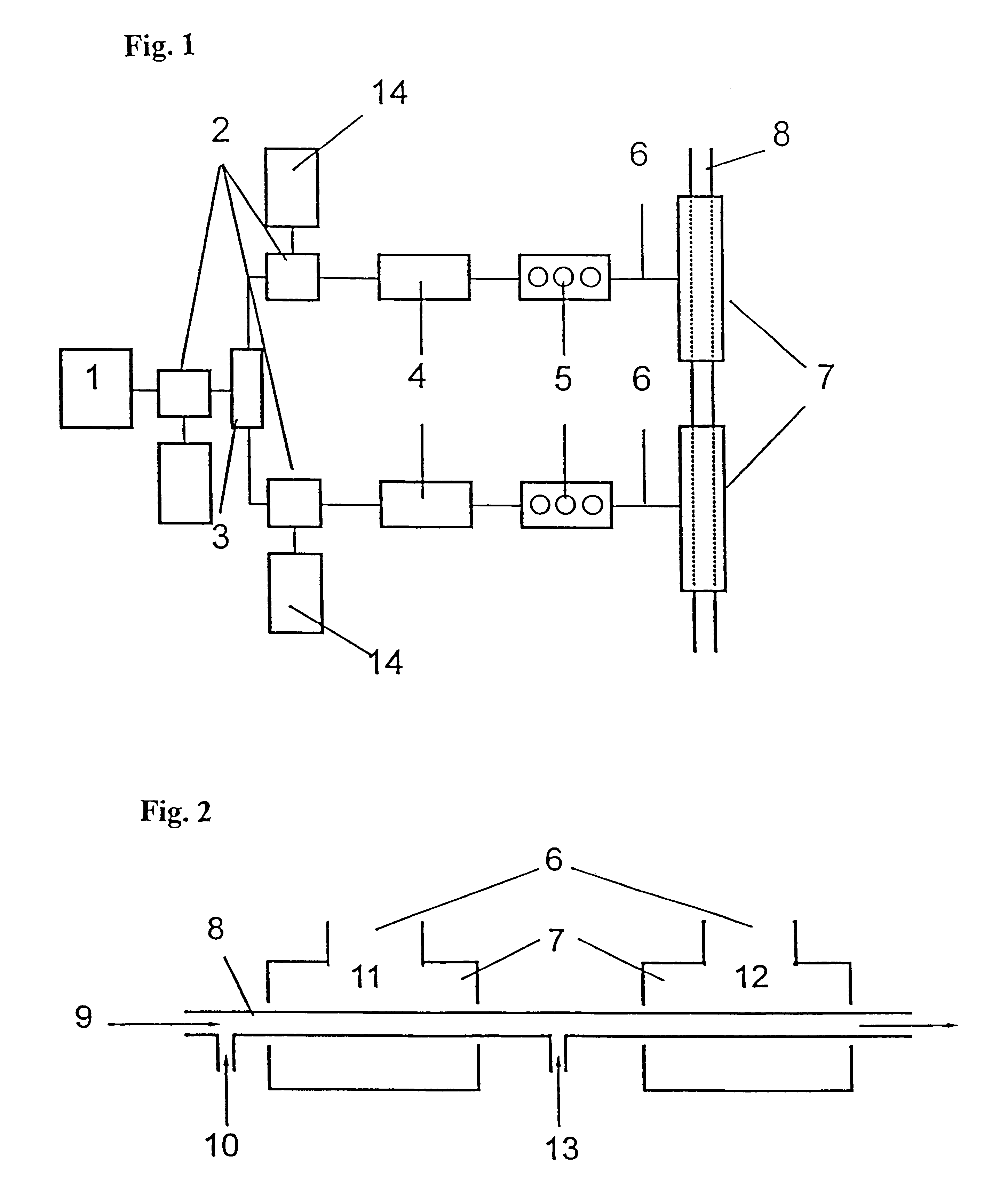Method for the production of coated particles
a technology of coated particles and coatings, applied in the field of coating particles production, can solve the problems that inorganic particles, particularly ceramic particles, cannot be distributed homogeneously in polymeric phases
- Summary
- Abstract
- Description
- Claims
- Application Information
AI Technical Summary
Benefits of technology
Problems solved by technology
Method used
Image
Examples
example 2
The experiment according to example 2[sic] was repeated. However, benzol with approximately 10 weight percent magnesocene was used as coating gas. The system pressure amounted to approximately 20 mbar, the gas flow in the reaction pipe was 50 Nl / minute. The temperature in the two plasma zones was increased to approximately 700.degree. C. The experiment resulted in glass-type silicon dioxide particles with a coating of amorphous carbon, containing a small share of crystallized graphite.
PUM
| Property | Measurement | Unit |
|---|---|---|
| diameter | aaaaa | aaaaa |
| temperatures | aaaaa | aaaaa |
| shell thickness | aaaaa | aaaaa |
Abstract
Description
Claims
Application Information
 Login to View More
Login to View More - R&D
- Intellectual Property
- Life Sciences
- Materials
- Tech Scout
- Unparalleled Data Quality
- Higher Quality Content
- 60% Fewer Hallucinations
Browse by: Latest US Patents, China's latest patents, Technical Efficacy Thesaurus, Application Domain, Technology Topic, Popular Technical Reports.
© 2025 PatSnap. All rights reserved.Legal|Privacy policy|Modern Slavery Act Transparency Statement|Sitemap|About US| Contact US: help@patsnap.com


